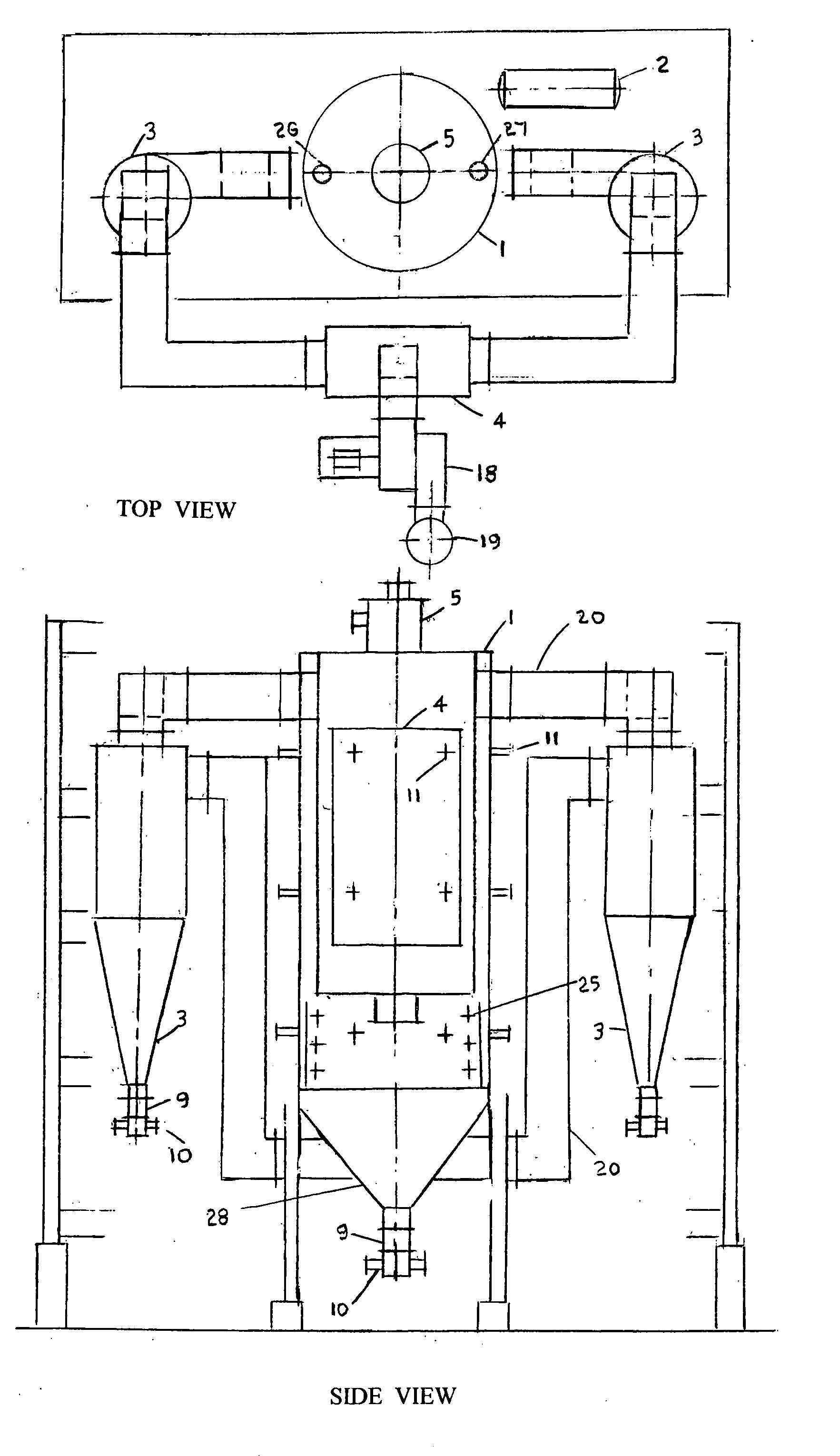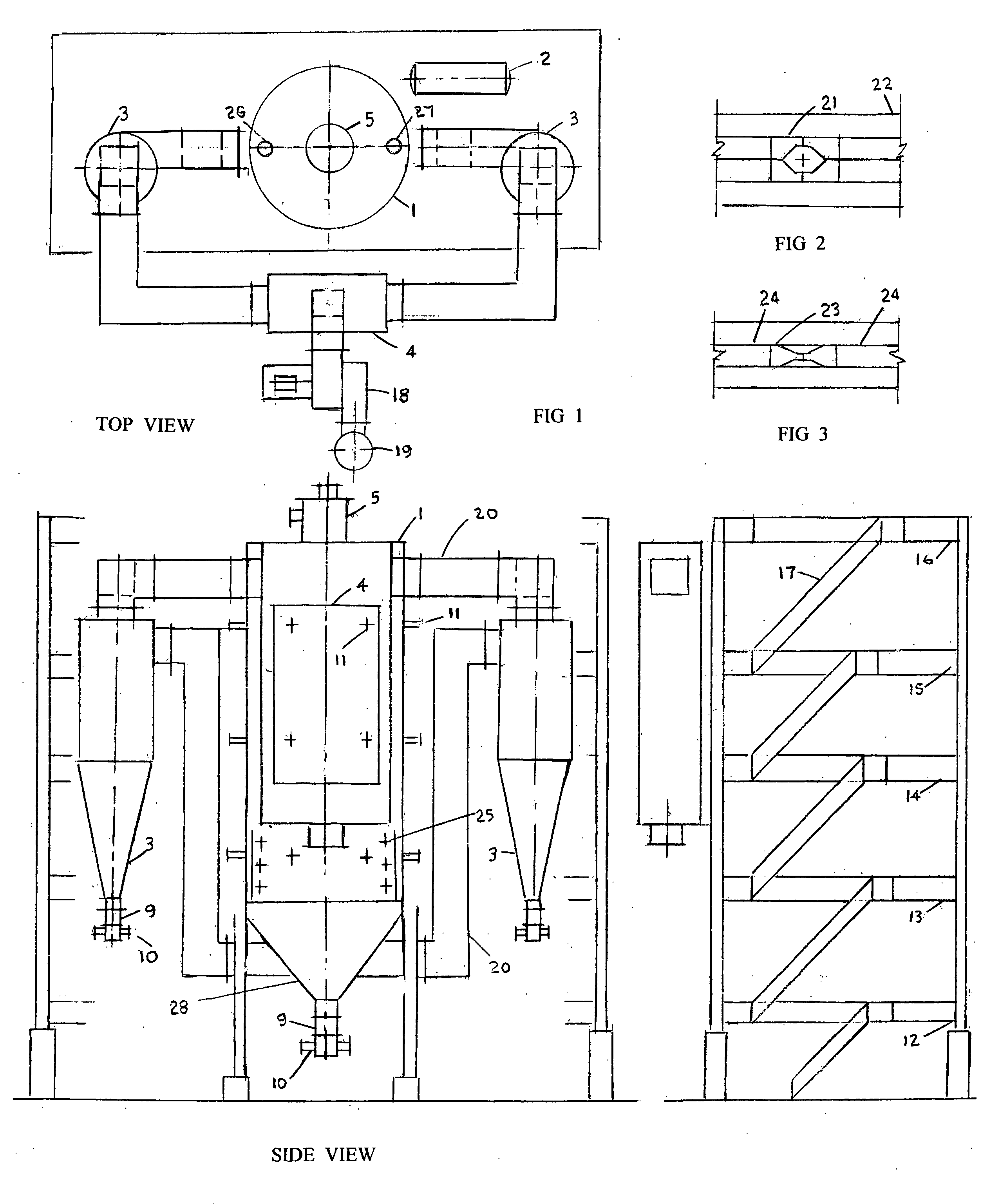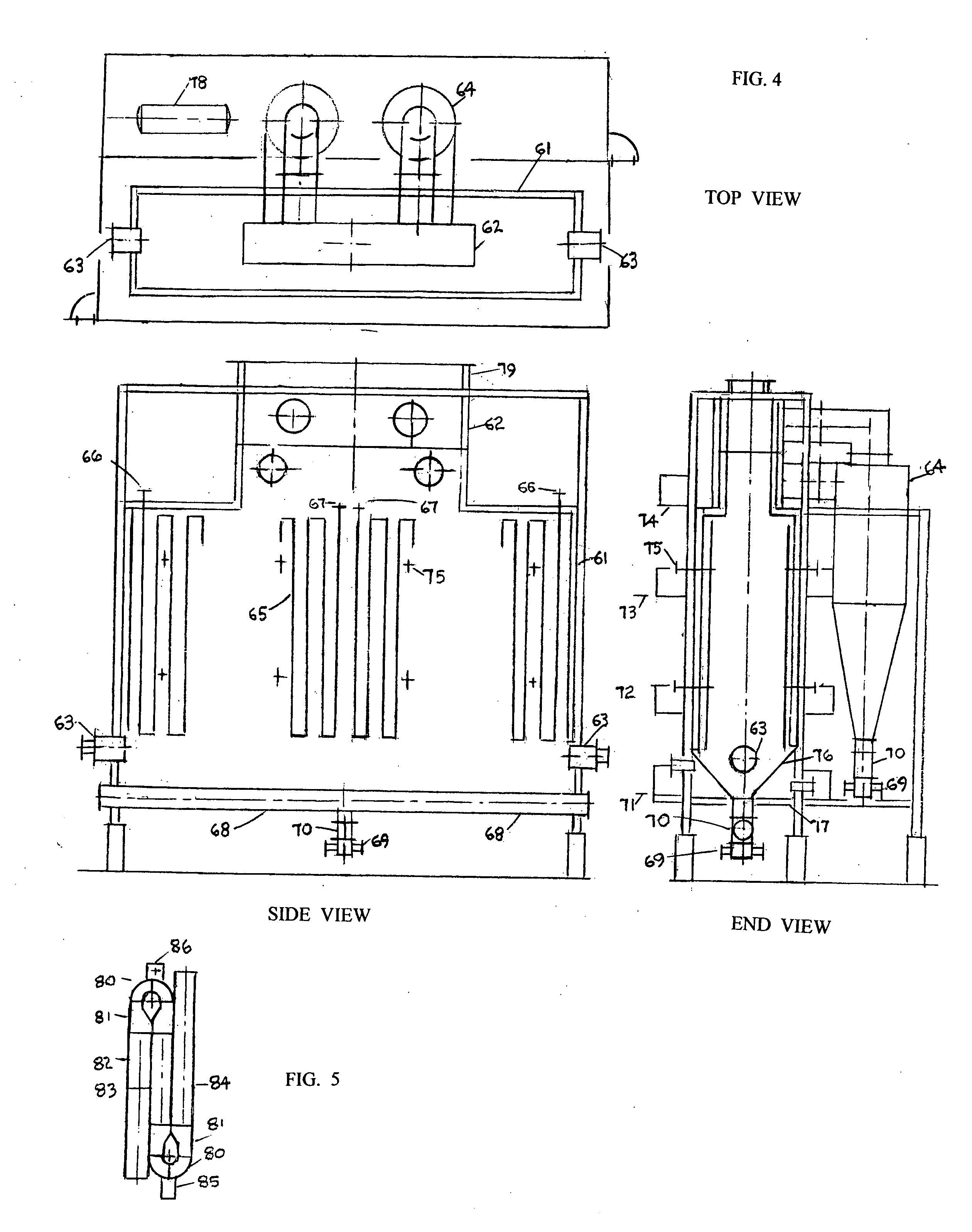Coal fired process heaters
a technology of process heaters and coal, which is applied in the direction of lighting and heating apparatus, solid fuel combustion, combustion types, etc., can solve the problems of pulverized coal, insufficient operation of conventional heaters designed for gas or oil firing, and refractory surfaces exposed to hot flue gas, etc., to reduce the risk of corrosion, and reduce the effect of interaction
- Summary
- Abstract
- Description
- Claims
- Application Information
AI Technical Summary
Benefits of technology
Problems solved by technology
Method used
Image
Examples
second embodiment
[0021]the proposed invention is as shown in FIG. 4, and consists of a steel shelled enclosure with rectangular side walls, end walls, and top and bottom closures, lined with refractory. A vertical contiguous top supported, bottom guided serpentine tubular coil, 65, is located concentrically with respect to the refractory lined end and side walls of the heater shell, the lining providing backup insulation for the tubular coil. Process fluid, the fluid to be heated, enters the process coils at nozzles, 66, and exits at nozzles 67. The process coil is contiguous so that contact with and fouling of refractory with ash is avoided. By using a serpentine coil arrangement, the process inlet may be located where flue gas temperatures are highest, that is, close to the burner outlets and process coil outlets may be located where flue gas temperatures are lowest, that is, remote from the burner outlets. In so doing, tube metal temperatures are minimized. By providing adequate clearance between...
third embodiment
[0028]the proposed invention is as shown in FIG. 6 and consists of a vertical cylindrical, helical coil radiant section, 118, the vertical shell of which is lined with refractory. A contiguous, up flow, bottom supported, tubular helical coil, 109, is concentrically located with respect to the refractory lining and steel shell, the lining providing back up insulation for the tubular coil. Process fluid, the fluid which is to be heated, enters the process coil at the lower most tube or tubes in the helix, 119, and leaves at the upper most tube or tubes in the helix, 120. The process coil is contiguous, so that contact with, and fouling of the refractories by molten or solidified ash particles cannot occur. By using an up flow process coil arrangement, the process fluid enters at the lower most tubes, 119, at a point where flue gas temperatures are highest and leave at the uppermost tubes, 120, at a point where flue gas temperatures are lowest As a result, overheating of tubes and proc...
PUM
| Property | Measurement | Unit |
|---|---|---|
| velocity | aaaaa | aaaaa |
| gas velocity | aaaaa | aaaaa |
| diameter | aaaaa | aaaaa |
Abstract
Description
Claims
Application Information
 Login to View More
Login to View More - R&D
- Intellectual Property
- Life Sciences
- Materials
- Tech Scout
- Unparalleled Data Quality
- Higher Quality Content
- 60% Fewer Hallucinations
Browse by: Latest US Patents, China's latest patents, Technical Efficacy Thesaurus, Application Domain, Technology Topic, Popular Technical Reports.
© 2025 PatSnap. All rights reserved.Legal|Privacy policy|Modern Slavery Act Transparency Statement|Sitemap|About US| Contact US: help@patsnap.com



